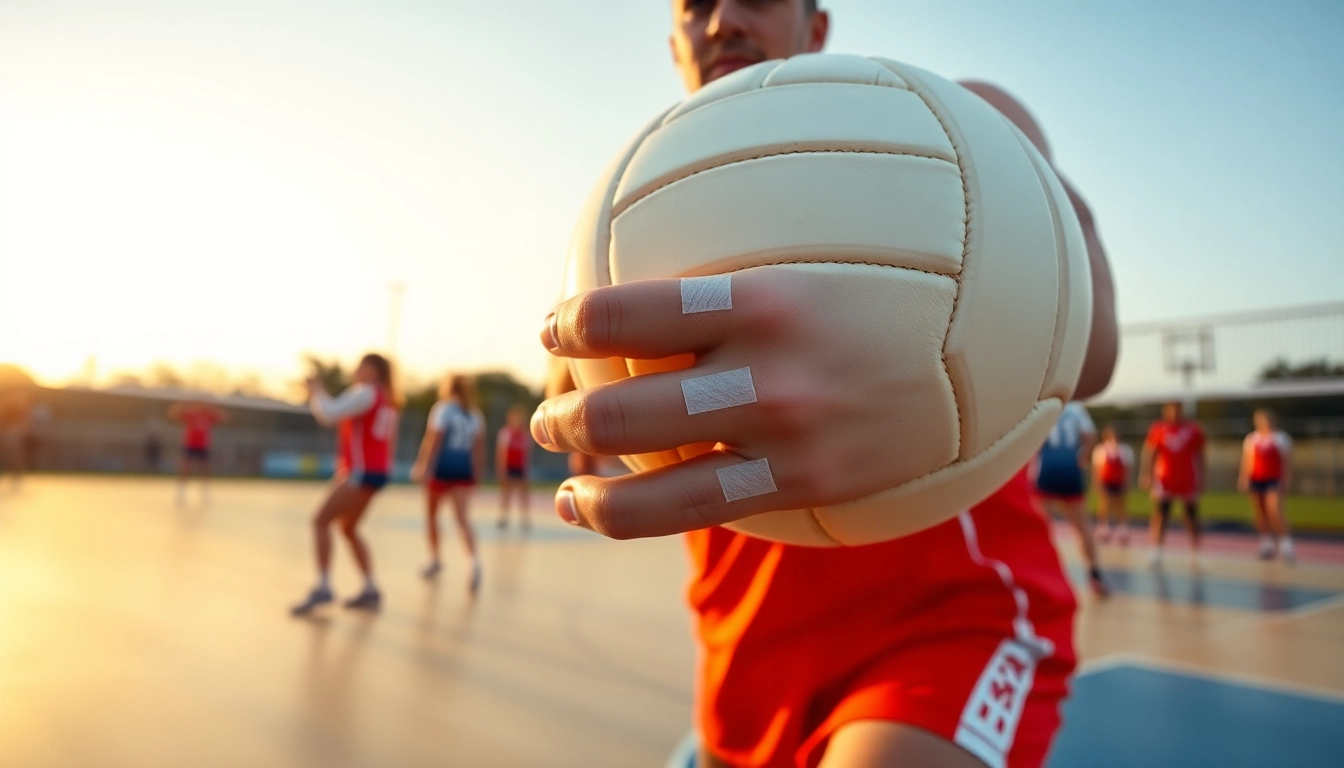Understanding Volleyball Thumb Taping
As volleyball continues to gain popularity worldwide, ensuring player safety and performance has become paramount. Among the myriad of techniques athletes employ to protect themselves, volleyball thumb taping has emerged as a vital skill. This process not only prevents injuries but also aids in recovery for those already facing thumb-related issues. Understanding the nuances of this technique can significantly enhance a player’s game, making it essential knowledge for both athletes and coaches alike.
What is Volleyball Thumb Taping?
Volleyball thumb taping refers to the practice of using adhesive tape to support and immobilize the thumb during gameplay. This method is particularly beneficial for players prone to sprains, strains, or injuries resulting from repetitive motions, such as blocking or spiking. Proper taping techniques can provide both support to the thumb joint and a degree of compression, which can help alleviate pain and enhance stability.
Benefits of Proper Taping for Players
The benefits of proper thumb taping extend well beyond immediate injury prevention. Here are some key advantages:
- Injury Prevention: By stabilizing the thumb, players can minimize the risk of acute injuries such as sprains and strains.
- Enhanced Performance: Taping can help maintain optimal thumb function, allowing athletes to perform at their best without discomfort.
- Pain Relief: For players recovering from previous injuries, taping can provide necessary support and compression, aiding in pain management.
- Improved Confidence: Knowing their thumbs are protected allows athletes to focus more on their performance rather than worrying about potential injuries.
Common Misconceptions Surrounding Thumb Taping
Despite its advantages, several misconceptions about thumb taping persist. One common myth is that taping is only for injured players. In reality, many athletes use taping as a preventive measure. Another misconception is that taping restricts thumb movement. When applied correctly, taping should allow for a natural range of motion while providing the necessary support.
Step-by-Step Guide to Volleyball Thumb Taping
Required Materials for Effective Taping
Before beginning the taping process, ensure you have the following materials:
- Elastic sports tape (preferably 1.5 inches wide)
- Scissors
- Skin-friendly adhesive spray (optional)
Preparing the Thumb for Taping
Preparation is crucial for effective taping. Start by cleaning the thumb and the surrounding area to remove any moisture or oils that could affect the tape’s adhesion. If desired, apply an adhesive spray to enhance grip. Ensure that the thumb is in a neutral position, slightly bent, as this will provide the best support during play.
Detailed Application Process of Volleyball Thumb Taping
Follow these steps for effective taping:
- Create an Anchor: Begin by wrapping a strip of tape seamlessly around the wrist as an anchor. This should be done snugly but not too tight to avoid restricting blood flow.
- Wrap the Thumb: Take another piece of tape and start at the base of the thumb. Wrap it around the thumb joint while ensuring that it maintains a slight bend.
- Figure-Eight Technique: Continue to wrap the tape around the thumb in a figure-eight pattern, crossing the tape over the back of the hand and returning to the anchor on the wrist.
- Finish with Compression: Secure the end of the tape by attaching it again to the wrist anchor, ensuring that the tape is snug but not overly constrictive.
Always test the mobility to ensure that the taping is effective and comfortable.
Best Practices for Maintaining Thumb Health
Signs You Need to Rethink Your Taping Technique
Understanding when to re-evaluate your taping technique is crucial for maintaining thumb health. Watch for these signs:
- Pain during or after play
- Restricted mobility of the thumb
- Discoloration or numbness in the taped area
Incorporating Strengthening Exercises
In addition to taping, strengthening exercises can help prevent thumb injuries. Consider incorporating the following into your routine:
- Thumb flexion and extension exercises
- Grip strength training with resistance bands
- Thumb abduction exercises
How to Care for Your Hands After Play
Post-game care is essential for recovery. After removing the tape, clean the area gently to prevent irritation. Apply lotion or ointment to moisturize the skin and promote healing. Additionally, perform gentle stretches to maintain flexibility.
Real-Life Applications and Success Stories
Athlete Spotlights: How Taping Improved Their Game
Numerous professional athletes attribute their success to proper taping techniques. For instance, several volleyball players have reported an increase in their performance levels and a decrease in injuries thanks to the consistent use of thumb taping. Such real-life applications underscore the importance of integrating these practices into training.
Expert Recommendations for Effective Taping
Experts in sports medicine suggest a few best practices for effective taping:
- Always practice taping before a game to ensure comfort and effectiveness.
- Consult a physical therapist for personalized techniques based on your specific needs.
- Stay updated on new taping techniques as research evolves.
Case Studies: Recovery and Performance Enhancements
Several case studies have documented the recovery journeys of athletes who have successfully integrated thumb taping into their rehabilitation programs. These include athletes recovering from ligament tears who experienced significantly improved mobility and reduced pain, enabling them to return to competition successfully.
The Future of Sports Injury Prevention in 2025
Innovative Taping Techniques on the Horizon
As sports medicine continues to advance, new techniques and materials are being developed to improve taping methods. Innovations such as biofeedback tape and smart adhesives that adjust based on the player’s movements are being explored. These advancements could further enhance the support provided by taping.
The Role of Technology in Sports Medicine
The integration of technology into sports medicine is transforming athlete care. From wearable devices that monitor thumb strain during gameplay to applications that provide real-time feedback on technique, technology is leading the way in preventative strategies.
Trends in Volleyball Equipment and Gear for Injury Prevention
Looking ahead, volleyball equipment is also evolving. Manufacturers are increasingly designing gear that supports injury prevention, including gloves and finger guards that work in conjunction with taping methods to provide a comprehensive approach to athlete safety.



